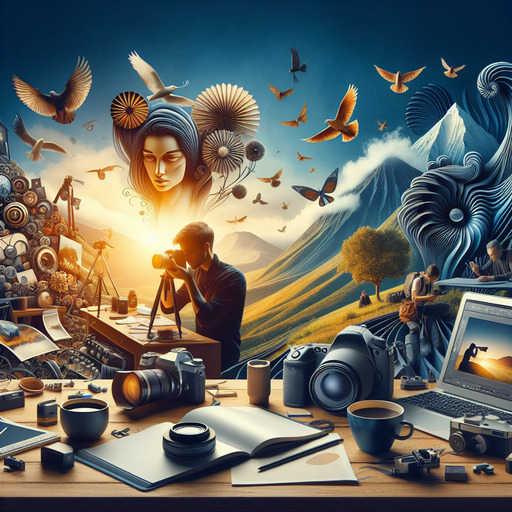
-
Table of Contents
- Mastering Photography: Tips and Techniques for Stunning Shots
- Understanding the Basics of Photography
- Why Mastering the Basics is Crucial
- Professional Photography Techniques
- Portrait Photography: Capturing the Essence of Your Subject
- Landscape Photography: Embracing the Beauty of Nature
- Editing: Enhancing Your Photos
- Why Editing is Essential
- Choosing the Right Photography Gear
- Investing in Quality Equipment
- Conclusion
- Questions and Answers
- What is the best time of day for landscape photography?
- How can I make my portrait subjects feel more comfortable?
- What are some essential editing tools for beginners?
Mastering Photography: Tips and Techniques for Stunning Shots
Photography is more than just capturing moments; it’s about telling stories, evoking emotions, and creating art. Whether you’re a budding photographer or a seasoned professional, understanding the nuances of photography can elevate your work to new heights. In this guide, we’ll explore essential photography tips, delve into professional techniques, and provide insights into various photography styles.
Understanding the Basics of Photography
Why Mastering the Basics is Crucial
Before diving into advanced techniques, it’s essential to have a solid grasp of the basics. Understanding the fundamentals allows you to make informed decisions about composition, lighting, and camera settings.
- Exposure: Learn the exposure triangle—aperture, shutter speed, and ISO—to control the amount of light entering your camera.
- Composition: Use the rule of thirds, leading lines, and framing to create visually appealing images.
- Lighting: Experiment with natural and artificial lighting to enhance your photos.
Professional Photography Techniques
Portrait Photography: Capturing the Essence of Your Subject
Portrait photography is about capturing the personality and mood of your subject. Here are some tips to enhance your portrait shots:
- Engage with Your Subject: Build rapport to make your subject comfortable, resulting in more natural expressions.
- Use Soft Lighting: Soft, diffused lighting can create flattering portraits. Consider using a reflector or softbox.
- Focus on the Eyes: The eyes are the focal point of a portrait. Ensure they are sharp and well-lit.
Landscape Photography: Embracing the Beauty of Nature
Landscape photography allows you to capture the grandeur of nature. Here are some techniques to consider:
- Golden Hour: Shoot during the golden hour (shortly after sunrise or before sunset) for warm, soft lighting.
- Use a Tripod: A tripod ensures stability, especially for long exposure shots.
- Incorporate Foreground Elements: Adding elements in the foreground can create depth and interest.
Editing: Enhancing Your Photos
Why Editing is Essential
Editing is a crucial step in the photography process. It allows you to refine your images and bring your creative vision to life.
- Basic Adjustments: Start with exposure, contrast, and color balance adjustments.
- Advanced Techniques: Use tools like dodge and burn, and selective color adjustments to enhance specific areas.
- Software Options: Consider using software like Adobe Lightroom or Photoshop for comprehensive editing capabilities.
Choosing the Right Photography Gear
Investing in Quality Equipment
While skill is paramount, having the right gear can significantly impact your photography. Here are some considerations:
- Cameras: Choose a camera that suits your style, whether it’s a DSLR, mirrorless, or compact camera.
- Lenses: Invest in lenses that complement your photography style, such as wide-angle for landscapes or prime lenses for portraits.
- Accessories: Consider tripods, filters, and external flashes to enhance your photography.
Conclusion
Photography is a journey of continuous learning and exploration. By mastering the basics, experimenting with techniques, and investing in the right gear, you can create stunning images that captivate and inspire. Remember, the best way to improve is to keep practicing and experimenting with new ideas.
For more insights into photography, you can explore this Wikipedia page on Photography.
Questions and Answers
What is the best time of day for landscape photography?
The best time for landscape photography is during the golden hour, which occurs shortly after sunrise and before sunset. The lighting during these times is soft and warm, creating beautiful, natural images.
How can I make my portrait subjects feel more comfortable?
Engage in conversation and build rapport with your subjects. Make them feel at ease by giving positive feedback and allowing them to express themselves naturally.
What are some essential editing tools for beginners?
Beginners should start with basic editing tools like exposure, contrast, and color balance adjustments. Software like Adobe Lightroom offers user-friendly interfaces for these basic edits.
If you’re interested in learning more about photography or our services, please reach out to us via our contact page.